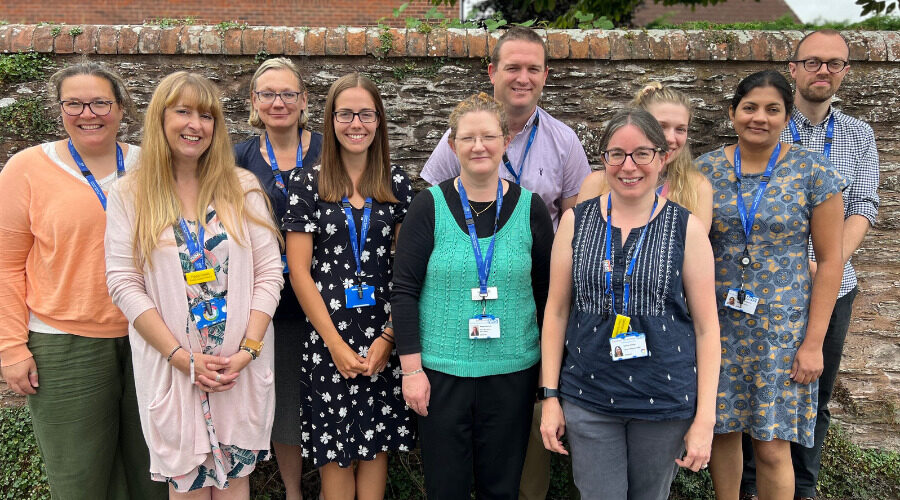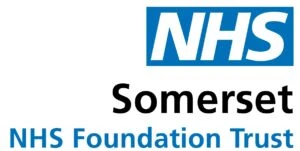
Spotlight
Celebrating the work of our Deaf Child and Adolescent Mental Health Services
The annual International Week of Deaf People takes place this week (18-24 September) and this year’s theme is a ‘world where deaf people everywhere, can sign anywhere’.
To mark the week, we’re shining a spotlight on the incredible work done every day by our deaf child and adolescent mental health services – more commonly known as ‘deaf CAMHS’.
It’s one of four regional deaf CAMHS in England, and covers the whole of the south west, from Gloucester to Swindon, and Dorset to Cornwall, and everything in between – including Somerset of course!
Alongside the support we provide in the community, we also have access to the Corner House specialist inpatient unit for deaf children, which is based in London and hosted by St George’s University Hospitals NHS Foundation Trust.
The service was first set up in 2009 following a five year trial in London and the Midlands, where it proved really successful.
Monica Cherryson, a family support worker in the team, explains how the service works: “We work with quite a wide range of people, from deaf children and their parents, to hearing children who have deaf parents.
“Research has found that parents who are deaf and use sign language, have difficulty in accessing general services, with their child tending to interpret on their behalf, but we work towards ensuring they can have equal access.
“We support people up to the age of 18 who may have a mental health condition, such as anxiety or a neurodevelopmental issue, who may also have a behavioural problem, sleep issues, low mood or depression – a range of different factors.
“We also run a specialist social communication clinic, where we assess children and young people for autism and their cognitive abilities.
“Many of the deaf young people we see, tend to have a language delay because they have limited access to the incidental learning that hearing people might have. For example, they are unable to follow a TV programme, listen to the radio, or hear people speak in the background. These delays can sometimes appear as if the person has autism, but it’s really important that we make that distinction, so they get the right support.”
Our clinical lead and principal psychologist for deaf CAMHS, Dr Gemma Palmer, describes how all the different roles in the team contribute to the care provided:
“Research shows that about 40% of deaf young people will have mental health problems at some point, compared with around 25% of those who can hear, so we know this group is more likely to need support. At the same time, they are also more likely to experience barriers to support, which is another reason our service was set up.
“A number of colleagues in our service are deaf themselves, and are at the heart of what we do, ensuring we are a bilingual and bilateral team.
“Everyone in the team has a few different signing skills, so we have a better awareness of deafness, and can better meet the needs of young people.
“We’re a relatively small team but cover a large area, so in many ways, the changes we needed to make during the COVID-19 pandemic to offer online appointments, have been really positive for us from a logistical and capacity point of view.
“Before the pandemic, we used to go out from Taunton every day to places like Gloucester or Cornwall, but we’ve actually found that working remotely is more convenient for our young people too, and it has given us a lot more freedom to be able to support them – particularly those who live in the more remote areas.
“We work closely with young people in the three deaf schools in the southwest – in Bristol, Exmouth and Plymouth – but we also support teachers and students in mainstream schools with hearing resource bases and helping them to meet deaf childrens’ needs.
“In our team we have a clinical lead, psychiatrists, psychologists, and specialist qualified mental health practitioners, such as drama therapists, occupational therapists, sensory integration therapists and play therapists.
“One of our colleagues, Matt, is a social worker by background, who’s trained in cognitive behavioural therapy – the only deaf colleague in the country who has undertaken this qualification.
“Our administration team also plays a key part in the service, and they all have British Sign Language (BSL) skills.
“Monica and Pippa are our deaf family support workers, who spend a lot of time with young people and their families to support deaf awareness. They have skills in language development and are very much aware of deaf culture too.
“Nine out of ten deaf people are born to hearing parents, but a lot of people who can hear won’t necessarily have much deaf awareness, and therefore won’t know how to best communicate with them.
“Our support workers help to provide support with little things, such as when a deaf person is sitting down at a family meal and simply can’t understand what’s going on. We support parents and young people on ways to work around this.”
Pippa Greed, who’s also a family support worker in the team, said:
“It’s really important that we advocate for the children and young people and the three of us in the service who are deaf, have that valuable lived experience so we can give that advice to professionals, parents and families.
"From a medical perspective, it may be that the young person needs a hearing aid, but we very much look at the social side, where we explore whether a certain treatment or way of support is helpful to the young person.
“In my personal lived experience, I was forced to have a radio aid, speech and language therapy lessons, and being forced to speak, but as a result I didn’t learn BSL until much later in life – this would have been really helpful for me at an earlier stage.
“In my role, I can support others by drawing on my experience, which can be particularly helpful for a child who feels forced to have a radio aid, for example, as there may be other ways of communication that work better for them – which we can help them with.”
Monica added: “Quite often a deaf patient will be given information in a leaflet or written format by a healthcare professional, and this may be difficult for them to understand.
“We can explain this to the young person in a more visual way with simpler sentences, knowing how they can best understand the advice they have been given.”
Gemma continued: “We have developed an ‘About Me’ document, which gives clinicians a visual snapshot about the young person’s likes and dislikes.
“In fact, I attended an appointment with a young person recently, and found that the young person was really excited by the document as it gave them a common theme to chat about – in this instance it was about the clinician’s dog! It was a brilliant way of opening up a conversation.
“Everything we do tends to be tailored to the needs of individual families, rather than a standard template of information or support. It could be that we use images with the letter, or translate the images into BSL.
“The importance of our visual care plans was highlighted in our two recent Care Quality Commission reports, as well as how we work really well with our qualified interpreter colleagues too, who know how we work and are trained specifically in mental health too.
“We’re lucky that we have such a broad range of interventions that we can offer young people and we talk a lot with our colleagues in other areas of the country, partly because deaf people do move around the country too for a deaf school.
“Typically, young people get referred into us via a healthcare professional and we aim to see them within 18 weeks, though more often than not, we complete our assessment in this timeframe too.
“Our initial assessment and observations take quite a long time as we want it to be thorough, so we can have a proper understanding of what the young person is able to access, and what the gaps and difficulties are.
“From then, we work as a multidisciplinary team, which usually includes both a hearing and deaf colleague being present. We’d work with the young person for an extended period of time, whilst linking in with their local services including schools, social care and local CAMHS as needed – it all depends on their complexity.
“It’s important to remember that we aren’t an emergency service, so in cases where there is a high level of risk to the young person, we will work with our local CAMHS teams.”
If you’d like to learn more about our Deaf CAMHS team, go to our website.

